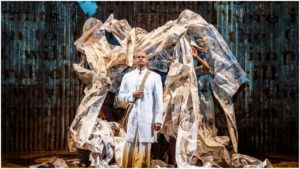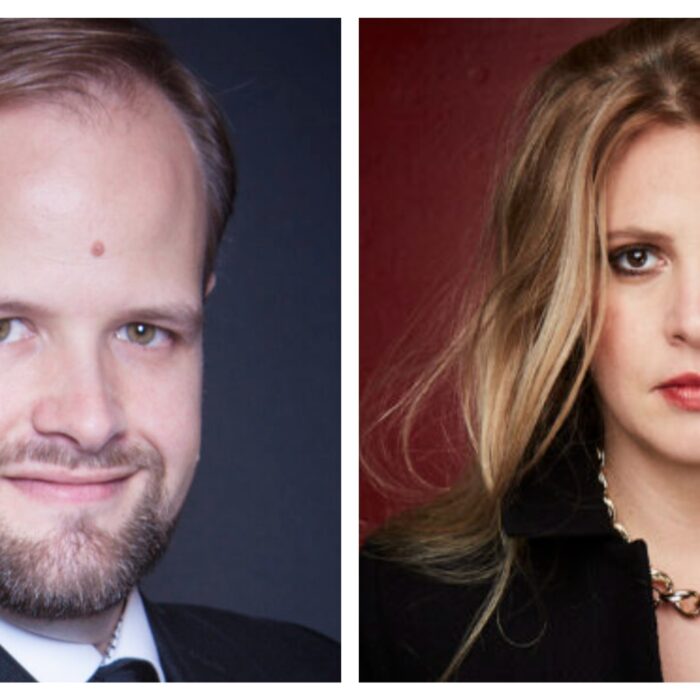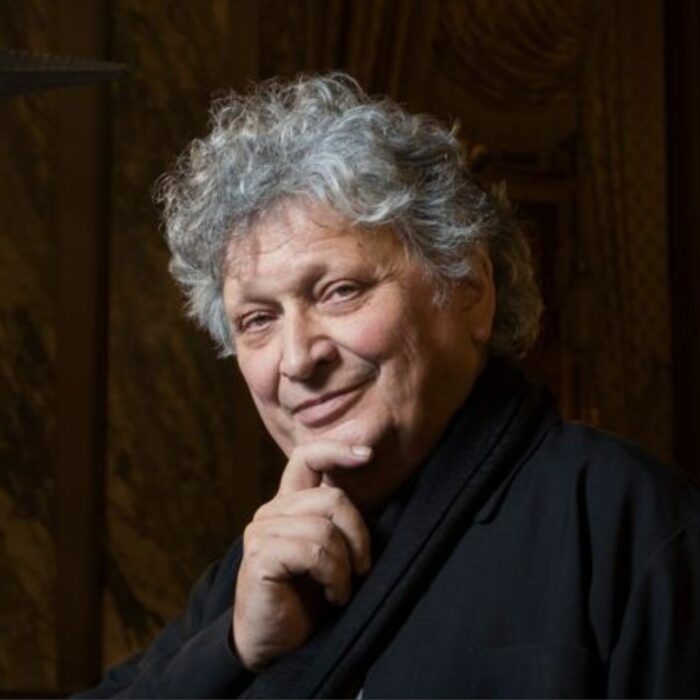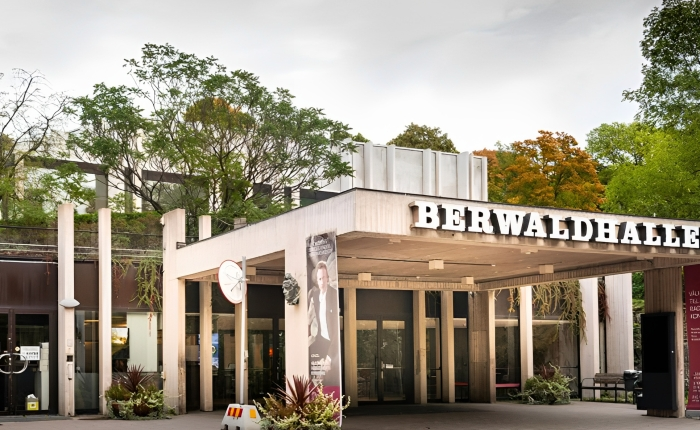
English National Opera 2021 Review: Satyagraha
A Spectacular Realization of Phillip Glass’ Political Meditation on the Life of Gandhi
By Benjamin Poore(Photo: ©Tristram Kenton)
English National Opera haven’t had a live audience in their home at the London Coliseum since March 2020. But they’ve hardly been idle: their costume department made hospital scrubs, they devised a singing program for those suffering with “long COVID,” and performed “Tosca” and “La bohème” in striking outdoor settings.
Their 2021-22 season opened last week with Phelim McDermott’s acclaimed production of Phillip Glass’ ruminative portrait of Mahatma Gandhi, “Satyagraha,” revived by Peter Relton.
For a company whose central tenet is singing in English, opening their season with a work performed surtitle-free in Sanskrit (its texts are based on the Bhagavad Gita, selected by Glass and librettist Constance DeJong ) might seem an unusual move. But McDermott’s 2007 production has proved box office gold, and something of a modern classic.
Theatrical Rhythm
Its three acts – “Tolstoy,” “Tagore,” “King” – narrate critical historical events from Gandhi’s life in South Africa, but more broadly offer space for reflection on what it means for human beings to struggle together for a better world. The work stages various famous episodes – the foundation of the collective at Tolstoy Farm, the New Castle march, and the resistance to registering Indians, amongst others.
Director Phelim McDermott describes Glass’ 1979 opera as having a prayer-like quality, and despite bearing the traces of operatic convection – duets, ensembles, chorus numbers with soloists, grand spectacle fusing music and design – it has a theatrical rather than dramatic rhythm. It is, nonetheless, utterly mesmerising; previous runs of the production have placed it amongst ENO’s most successful shows, alongside McDermott’s other realisation of the famous Glass opera “Akhnaten”.
“Satyagraha” roughly translates as “truth force;” it describes an unwavering commitment to struggle against injustice that is non-violent but totally insistent. In practice, this movement meant ordinary people coming together, and, through the force of their collective will, changing the world. It is an approach to politics that is at once cumulative, introspective, and collective.
These principles are what give Phelim McDermott’s extraordinary production the same kind of power as Gandhi’s idea. It is the apogee of opera as an art form that is more than the sum of its parts (the weakest link being Glass’ score, though one must account for its love-it-or-hate-it quality) in a perfect fusion of singing, score, design, acting, and spectacle; these distinctive elements build on and enhance each other to produce a unique and riveting experience of theatre.
Striking Stagework
The distinctive stagecraft comes from the improvisatory puppetry of theatre company Improbable, who take simple materials – enormous sheets of newsprint in Act two, exploring the foundation of Gandhi’s paper “Indian Opinion” – and manipulate them to extraordinary effect. Sheets of newspaper undulate across the stage, then form a wall, then are bundled and ripped in a great writhing mass that seethes with revolutionary energy, and from which Sean Panikkar’s Gandhi emerges. In Act three, countless lengths of sticky tape are drawn painstakingly across the stage, before being pulled together to form a glistening, fragile figure that takes flight with an acrobat; this process takes fifteen minutes.
The production is defined by a feeling of inexorable accumulation and breakthrough, exquisitely soundtracked by the simple modulations and textural transformations of Glass’ score. Ordinary objects – corrugated iron, wicker baskets, paper and cardboard – manifest extraordinary creatures – some grotesque, some beautiful – that teem with awkward life. As a political allegory for how collective action transforms everyday life, it was deeply moving.
There is much else besides. The three figures inspiring Gandhi and giving each act its name – Leo Tolstoy, Rabindranath Tagore, and Dr. Martin Luther King – appear in a dumb show above and behind the curved space of the stage. Projections share moments of the Sanskrit text and mark off divisions between scenes. Movement is stately and meditative throughout, with the exception of the energetic and distressing stoning of Gandhi in Act two by the chorus.
Striking and indicative of the show’s power is the closing sequence of Act two (‘the Vow’), where the chorus walk, one by one, to a central pit to use their registration cards as kindling, ignited by Gandhi with a torch. The Act ended with the burnished glow of the fire filling the auditorium. Revival director Peter Relton brings a painful contemporary touch to Act three, with police attacking protestors (first in silhouette, behind newsprint) clad in the kind of quasi-military gear familiar from countless BLM protests. In an opera that is principally historical and symbolic they were piercingly present.
Balancing Richness
Sean Panikkar leads a capable cast. Both principals and chorus should be praised for the focus of intensity of their performances, whose musical demands are hefty insofar as grinding repetition, from a textual point of view at least, is called for. This was executed without flagging, loss of tone, or slowing down, over the course of some three hours.
Panikkar himself balances richness and lightness, with unfaltering consistency across the voice; his opening and closing sequences had a glassy serenity with a hint of creaminess. As an actor, his focus never wavered and his movement disciplined – he is onstage for the duration of the opera.
Ross Ramgobin and Musa Ngqungwana made a fulsome duo as Prince Arjuna and Lord Krishna in Act one; amongst the lower voices Will Thomas brought lyrical heft as Parsi Rustomji. James Cleverton was unflagging in tackling the relentless high notes of Mr Kallenbach. Verity Wingate’s Mrs. Naidoo shone in the upper reaches, as did Gabrielle Cassidy’s Miss Schlesen. A weaker link was found in Sarah Pring, whose impassioned Mrs. Alexander pleaded convincingly but vocally was somewhat underpowered.
The ENO chorus, particularly the men, impressed with their power and control. The grotesquely made up men at the opening of Act two must have diaphragms of steel – the repeated “ha ha ha” is the stuff of vocal warm-up nightmares. (And sung sat down, no less.)
Carolyn Kuan made her ENO debut in the pit, and managed to draw enticing and varied expressive shapes from both stage and pit from music that most people think is mere repetition; she was impressive indeed in marshalling the climaxes – both dynamic and textural – that give the piece its structure and let it unfold meaningfully. She’s no slouch – the brighter, faster sections blazed with excited intensity.
In combination with the action on stage, it felt like a whole world opening up. Go and see it twice.


